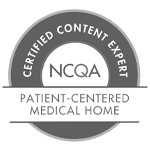
Many people head to a hospital when they feel sick or have a minor injury, but this isn’t always the best option. When appropriate, visiting an urgent care facility usually results in shorter wait times and lower costs. Bradford Clower, a Certified Registered Nurse Practitioner at Keystone Urgent Care, explains the difference between the two in today’s Take Care article.
How does an urgent care office differ from a hospital emergency department?
Urgent care centers and emergency departments both treat patients who need same-day care, but they differ in purpose, scope and cost. Emergency departments handle life-threatening or potentially serious conditions requiring immediate and advanced care. Urgent care facilities are also designed to provide prompt treatment, but for illnesses and injuries that are not life threatening.
What are some examples of things that can be treated at an urgent care?
If you’re feeling sick and can’t be seen by your primary care provider, or if you have a minor injury, going to an urgent care is usually the best choice. Some examples of conditions we treat include: urinary tract infections, ear infections, flu, mild asthma, rashes, minor fractures, sprains, cuts needing stitches, etc. Most urgent cares have resources such as basic laboratory testing, x-rays, sutures, IV fluids (when needed) and medications available within their clinic.
What are some examples of when people should go to the emergency department instead?
In the case of a serious injury or a condition which could be immediately life-threatening, time is of the essence; call 911 or go directly to the hospital. Don’t waste time going to an urgent care, as they are not equipped to handle these types of situations. Emergency departments have access to more advanced diagnostic tools and treatments, such as advanced imaging (CT/MRIs), operating rooms for surgery, specialists and more.
Some examples of when you should go to the emergency department include: chest pain/heart attack, stroke symptoms, severe shortness of breath, major trauma, uncontrolled bleeding, severe head injury, seizure and overdose.
What are the benefits of going to an urgent care instead of a hospital, when appropriate?
The benefits of visiting an urgent care, when appropriate, are the costs and the wait times. Urgent cares have much lower costs, often the same or similar to a primary care copay. Emergency departments have higher costs due to the facility fees, resources and advanced services needed at hospitals. In addition, wait times are usually shorter at an urgent care due to treating less severe ailments than those at a hospital.
Conclusion
Urgent cares and hospitals are both designed to offer same-day care, but their functions are different. Go to an emergency department if there is a possibility of losing life, limb or vital function. Go to an urgent care for conditions that are uncomfortable but not dangerous. By knowing the difference, you can receive the most efficient care for your needs.
This article contains general information only and should not be used as a substitute for professional diagnosis, treatment or care by a qualified health care provider.
Keystone Urgent Care offers two convenient locations. Click here to learn more.




